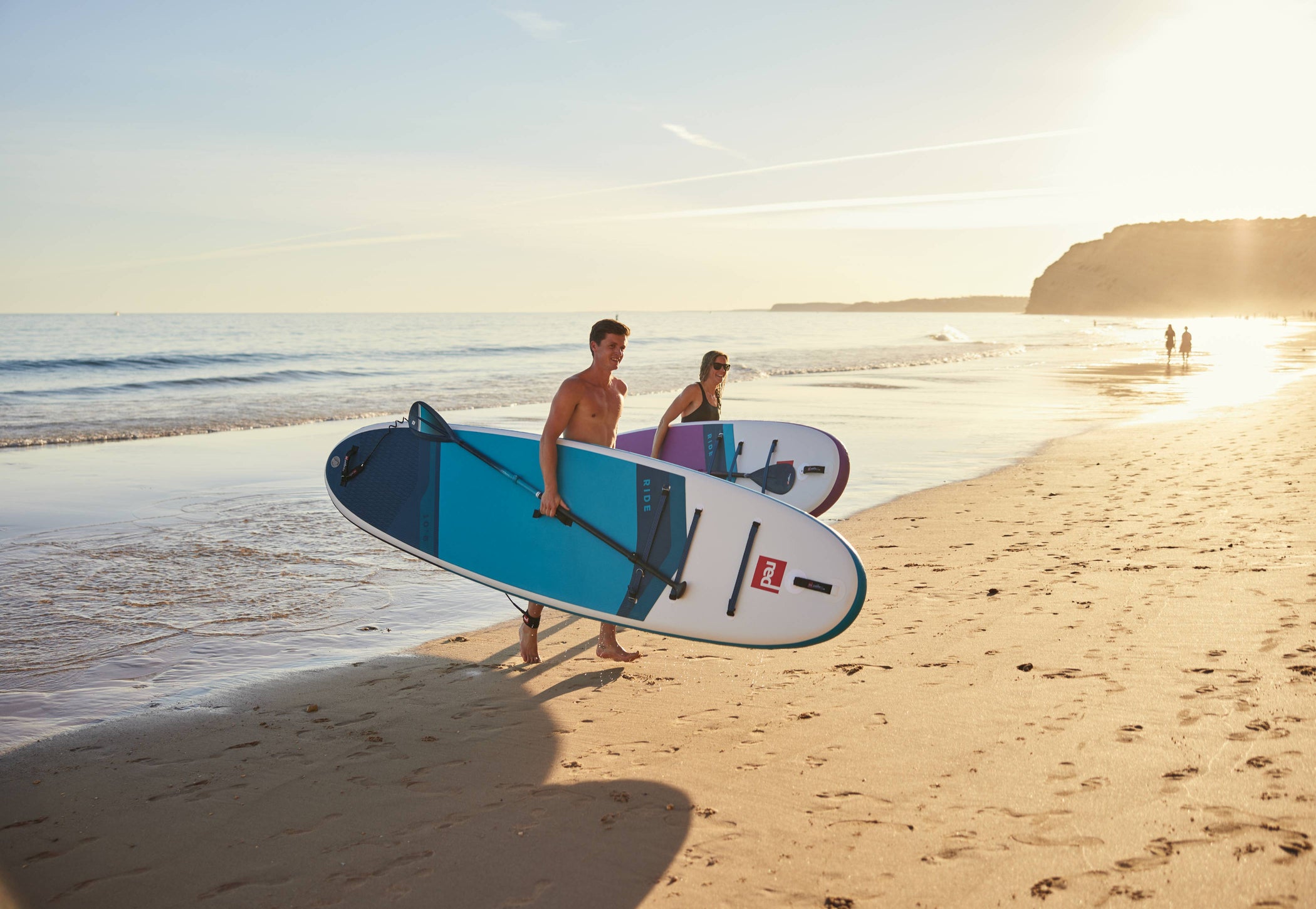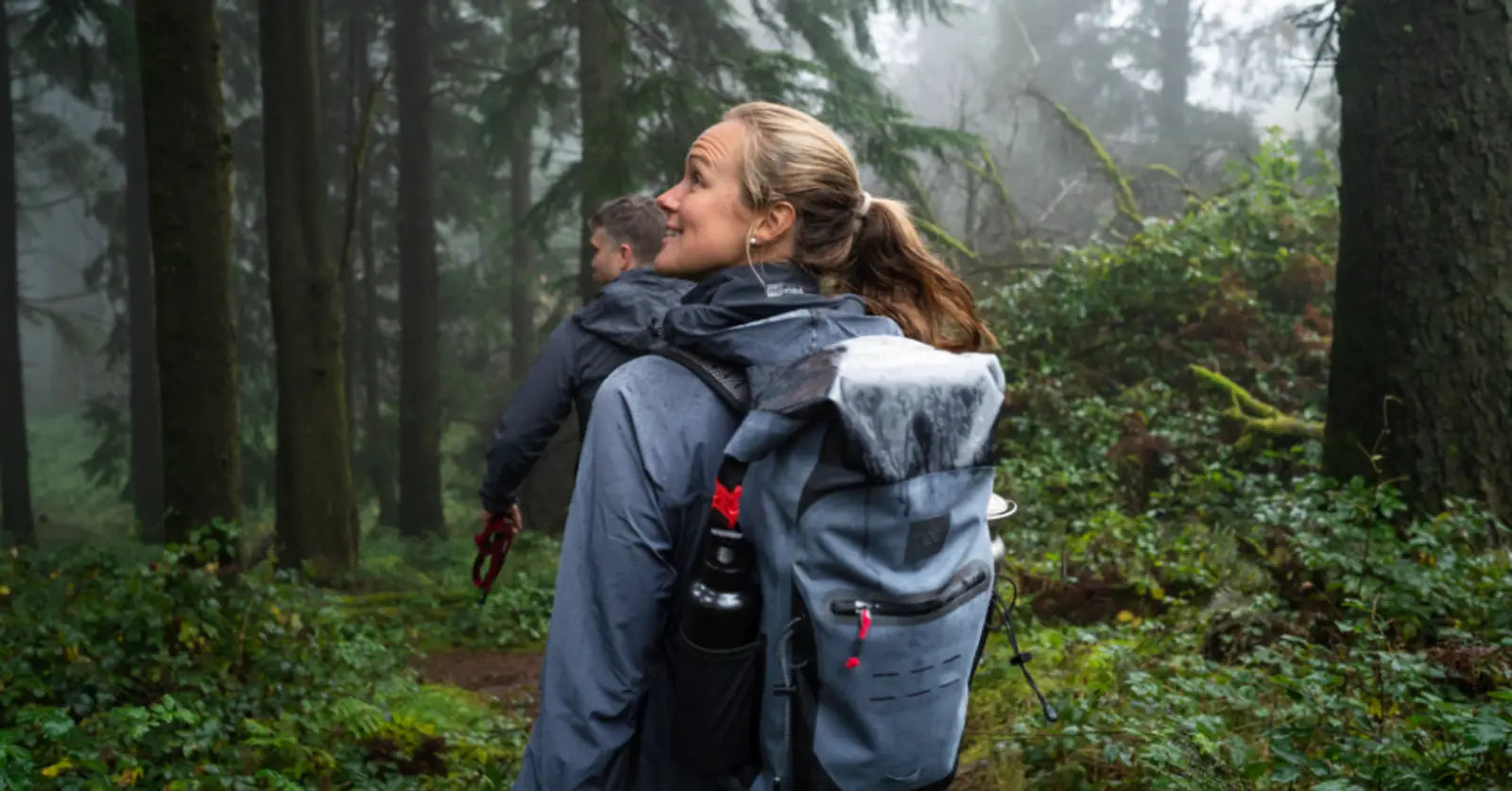
Single Layer VS Double Layer SUP - What Makes An MSL Paddle Board Better?
At Red, we believe strongly that an MSL paddle board is the right choice every time. Find out why we prefer them to single layer boards.


Written by Lydia Burdett /
Whether you’re preparing to take on a mountain or simply starting to take your hiking a little more seriously, you’ll quickly realise that there’s a little more to it than just putting one foot in front of the other. Choosing the right route and having the right equipment will become a priority, and you might also start to hear more technical terms such as ‘scramble’ or ‘scrambling’ pop up in conversations you have and information you read. This will most likely beg the question what is scramble in hiking? Let us explain.
Scramble in hiking refers to a section of the trail or hiking route that involves using your hands to safely navigate more rugged, steep and rocky terrain. Scrambling sits somewhere slightly beyond hiking in terms of the physical demands it places upon you, but does not go as far as requiring the use of ropes and a harness like rock climbing. If you are planning to hike up a mountain then it is likely that you will encounter some elements of scramble towards the summit. However, scrambling has also established itself as an outdoor activity in itself and growing numbers of outdoor enthusiasts actively seek out scrambling-focused routes.
A scramble in hiking can vary in difficulty, depending on the steepness of the terrain as well as the size and stability of the rocks. Given the variety of types of scramble, it’s important that you assess your own abilities and comfort levels before a scramble and build up to more challenging routes. You can also look at the grade given to a scramble to get a better idea of how hard or challenging it may be.
The Yosemite Decimal System (YDS) is most commonly used to grade the terrain that may make up a scramble in hiking. This US grading system takes into account how difficult the route is to tackle alongside the risks of an unsuccessful scramble to grade the terrain. On the YDS scale, there are 5 grades.
Class 1
A Class 1 scramble is not too different to walking and some hikers would argue that Class 1 terrain should not even be classed as a scramble. You can expect this kind of terrain to be steep but the need to use your hands will be limited in comparison to the other grades and you may not even need to use them at all. For this reason, most hikers with reasonable fitness levels should expect to be able to tackle Class 1 terrain and this is the most common type of scramble you are likely to face.
Class 2
A Class 2 scramble is likely to pose a little more challenge than a steep walk would. On Class 2 terrain, you will need to use your hands to balance but there should be plenty of places to comfortably put your hands and feet. While still considered an ‘easier’ scramble, it’s important to note that no class should be tackled lightly. Even terrain of this grade can pose a significant risk should you fall or lose your footing and therefore you must assess your own ability and comfort level before attempting.
Class 3
Class 3 terrain is where a scramble in hiking might start to feel more like climbing and you should only tackle routes with this kind of scramble when you’ve successfully navigated a number of Class 2 scrambles. Hand and foot holds will be smaller and the route ahead may be less obvious on this kind of terrain. You will need to be alert and conscious of your surroundings at all times.
Class 4
Class 4 terrain can be described as posing significant challenges and therefore significant danger if you are not suitably prepared and experienced. The terrain will be exposed and therefore pose a risk to life should you slip or fall. It will take several years to build up to tackling this kind of scramble and you will need specialist equipment including a helmet and ropes.
Class 5
Tackling Class 5 terrain will be classified as technical rock climbing. Even very experienced rock climbers will find this kind of terrain challenging and therefore hikers should never find themselves in a situation where they need to be navigating a Class 5 route.
If you are keen to try scrambling, the most important thing to remember is that you should only commit to a safe route. Even Class 2 scrambles can pose a significant challenge and danger, so build your experience on terrain of lower difficulty before you build to more technical routes.
When you do tackle a scramble, ensure that you are wearing grippy footwear and always test your hand and footholds before committing your entire body weight to them. Climbing down is always harder than climbing up, so do not force yourself up a route. If it doesn’t feel safe or sensible then reassess and find a more suitable route or turn around and enjoy the views as you return to the start of your hike.
Spend $150 more for free delivery
Your bag is currently empty.
Creating an account has many benefits: